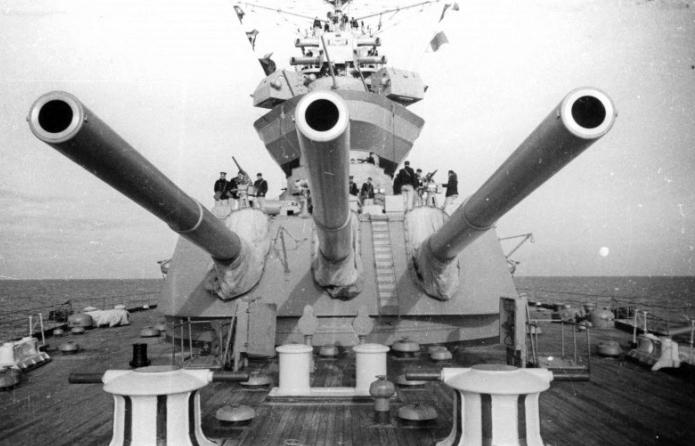The battleship "Marat" was laid in 1909, and launched in 1911. Then it was called differently - "Petropavlovsk". About three years were spent on the installation of weapons and equipment, after which the ship was transferred to the operating fleet. It was huge: the length was 181 m, the greatest width was 27 m, and the depth of draft was 8.5 m.
The role of the Baltic sailors in the world war was not very important, the main battles took place on land fronts. Russian ships were locked in the Gulf of Finland mined by the Germans, their participation was limited to delivering artillery attacks on the enemy.
Most of the Baltic Fleet sailors supported the Bolsheviks coming to power, who conducted active propaganda work among the personnel. Nevertheless, in 1921, after understanding the politics of the new government, the sailors raised an uprising in Kronstadt, demanding the creation of councils without communists.
The rebellion was crushed, the rebels shot. In order to erase events unpleasant for the Bolsheviks, many ships were renamed, including Petropavlovsk.
The battleship Marat (that was the new name) was repeatedly modernized in the next two decades. The basic structure of the hull was powerful, its dimensions made it possible to install various weapons systems. The displacement of the ship, which amounted to 23,000 tons in 1914, was increased to almost 26 thousand, mainly due to the weighting of add-ons, the improvement of the propulsion and energy system (it became possible to use liquid fuel), the installation of artillery and air defense machine guns (in which there was a need) . Much has been done to ensure that the battleship Marat is equipped with modern communication equipment, rangefinders and fire control devices.

The power indicator of any artillery ship is the main caliber. Even in tsarist times, the Obukhov plant produced excellent tools for the fleet. Twelve 305 mm barrels were located in four artillery towers. Barrage battleship "Marat" could lead from sixteen 120-mm guns of the Vickers system with a rate of fire of 7 rounds per minute each. True, their location on the middle deck caused complaints from sailors, since their low position made it difficult to fire when they were excited, but, as subsequent events showed, it did not matter much.
By the beginning of the war, the USSR possessed three powerful artillery dreadnoughts, one of which was the battleship Marat.
The history of 1914 was repeated in the summer of 1941. The Baltic fleet was blocked in the Gulf of Finland and deprived of the opportunity to access the operational space. The value of ships in such a situation was determined by the ability to shoot far and accurately, they turned into floating artillery batteries, which, in general, was also good.
Having experienced the work of long-range “twelve-inch”, the Germans quickly realized that something needs to be done to silence them. Only attack aircraft could become a real means to solve this problem.
Hans-Ulrich Rudel was instructed to bomb the Soviet dreadnought. This chief lieutenant of the Luftwaffe gained combat experience during the European campaigns, having proved himself to be one of the most accurate pilots. Before him, many tried to hit the ship, first with 250 kg, then half-ton bombs, but only this pilot managed to get into the powder magazine.
A bomb weighing 1000 kg pierced the armored deck and caused detonation of the ammunition. The entire bow broke off, more than 320 crew members died, including the commander of the ship, Ivanov P.K.
Trying to save the battleship "Marat", the personnel showed courage and resourcefulness. It was possible to lay the hull on the ground with minimal roll and trim, which made it possible after the rescue operations to maintain the combat effectiveness of the artillery towers, and then fire from the second bow. In this position, the ship fought before the day of the breakthrough of the Leningrad blockade. In 1943, he again became the "Peter and Paul". Apparently, the time of the Dantons-Robespierres is over ...
There was another renaming, in 1950 the battleship was called “Volkhov”. The vessel was cut into metal in 1953, young sailors still had time to learn on it.